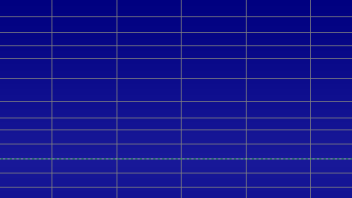This post is just for crazy knob tweakers like myself. To me, the Kemper is a science lab that I play in all day long creating crazy inventions.
Disclaimer:
I am a big fan of Goldwave. A stand alone audio editor that has been around for years. Recently I started using an effect called the Spectrum Filter. This effect uses FFT and allows you to draw the frequency response you would like. Goldwave can usually be used in demo mode because the author is a god. I use it everyday for so many things. I am not affiliated in anyway to the company/author. These methods can be used in any audio editor.
LETS DO IT:
Step 1 is to get a base Impulse audio file. You can make one in Goldwave by manually editing a single sample in a file or use something you already have (made or from web, etc). In theory a single sample is a very short square wave signal. Since the rise of the wave is instant, it will create/include all of the odd harmonics after it. So all of the audio frequency spectrum will be present in this tiny pulse.


Step 2 is to open the Spectrum Filter in Goldwave. From this dialog you can add/remove points on a frequency plot to create the response you are going for. Once you apply this effect to the Impulse file you should get a response very close to the curve you drew. Looking at the resulting waveform you can see it is no longer a square wave.



Step 3 is to apply some gain to the signal to get the most volume out of the final IR. In Goldwave you can choose the Maximize Volume effect. I usually set the new volume to be -3dB. This gets me close to the normal Kemper volumes and makes it easier when comparing IR/CAB so the volume is not jumping around.

Step 4 is to save the file. You can select many different formats in the dialog. IRs are simply WAV files. I use the standard CD quality values of 44.1 kHz sample rate, mono, 16 bit.
Step 5 How you get this into the Kemper is up to you. I have a folder in Rig Manager that I drag them into so I can sample them and rebuild then over and over the get the right response I am looking for.
THE END
As of late, I have been focusing on making DI profiles and then designing these custom IRs to fit. The results have been pretty good.
I recently added a profile to the exchange of just a Metal Zone pedal and one of these IRs. No amp, speakers, or microphones we hurt in the making of this profile. Just pedal and IR. And it came out pretty cool. Way better than I imagined it could.
IMPULSE FILE
I could not attach a WAV file here. So I do not have an easy button for you. Generically, common IRs are based on 1024 or 2048 samples. Using a sample rate of 44.1 kHz means we need approx 46mS of audio. You will want some dead time before the pulse, so I used 50Ms. I created the IR pulse at around .45mS.
![]()
